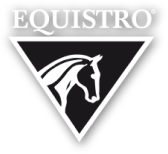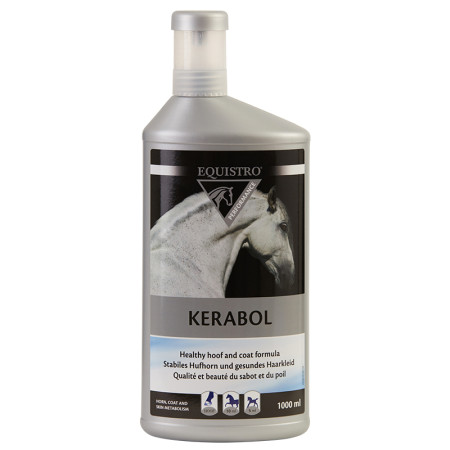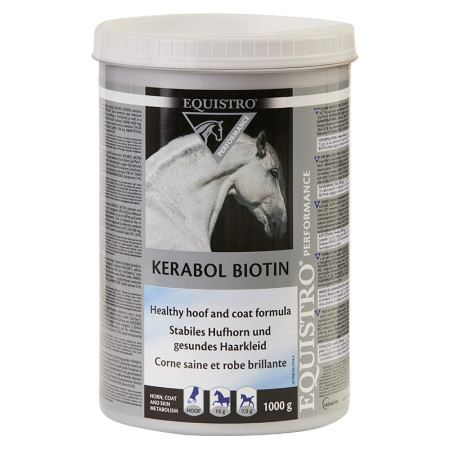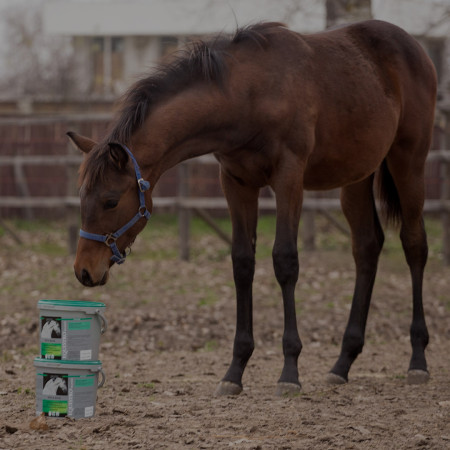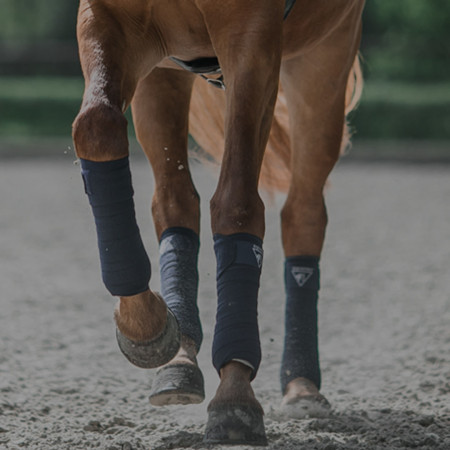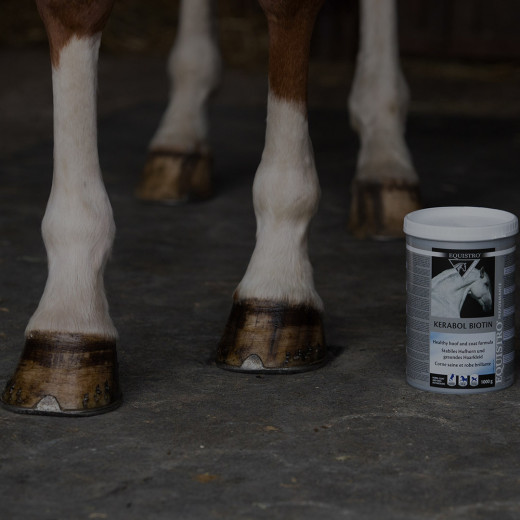
Hoof health
The hoof - a miracle of evolution
Besides the tendons, ligaments, joints and muscles, the hoof is the elementary functional unit of the equine limb. It must not only be capable of bearing the entire weight of the horse, but also act as a shock absorber while also offering protection from harmful external influences to the anatomical structures surrounded by the horny box (coffin bone, navicular bone, pastern bone, coffin joint, pastern joint, navicular bursa, insertion of the deep digital flexor tendons, etc).
A healthy hoof grows at a rate of approx. 1 cm per month. It takes around a year for the horn of the entire hoof to be replaced from the coronary groove to the bearing edge. This is not least due to the good circulation of the hoof dermis, whose fine vascular network of wafer-thin blood capillaries helps to supply nutrients ensuring continuous horn growth.
The hoof dermis is the key link between the coffin bone and the horn-producing epidermal layer. The coffin bone is securely anchored through interdigitation of the dermal lamellae with those of the horn-producing epidermal layer in the manner of a hook and loop fastening. This means that there is no restriction of the blood supply when the hoof needs to briefly absorb a heavy weight, as for example when landing after a jump.
Manicure - a must
Regular treatment of the hoof horn by a farrier is essential to maintain the shape of the horn and to ensure unrestricted movement of the horse. The farrier not only shortens the hoof horn, but also inspects its condition, as well as ground contact and limb positioning to compensate for any misalignment by means of optimal trimming. The intervals for the farrier’s visits (generally every 8-10 weeks) should be individually adjusted to the horn growth rate and to any special findings then observed.
Hoof horn is very sensitive
There are numerous reasons for fragile, deformed, brittle or cracked hoof horn. Apart from genetic components, weather conditions, diet and the environment in which the horse is kept are the main factors influencing the condition of the hoof horn. An environment that is permanently moist or too dry can be just as harmful to the hoof horn as constant contact with excrement containing ammonia. Discrepancies in the metabolism of the horn may manifest themselves in very different ways, for example hoof rot, hoof abscesses, sandcracks, splitting of the horn, brittleness, cancer of the horn and thin walls (sensitive soles). Special care is required above all for damaged hooves subject to high stress. The horse must be supplied with all key nutrients to promote healthy growth of the hoof. Good blood circulation is also essential for healthy hoof growth. It is no help supplying nutrients if they do not (cannot) reach the very points where they are needed.
Well-being for the horn
In terms of supplementary care for damaged hoof horn, the three "gold-standard" substances biotin, zinc and methionine play an important role in ensuring that the metabolism of the skin, horn and coat functions properly.
Biotin
The water-soluble vitamin H (vitamin protecting the skin and hooves) = biotin is a major factor for maintaining the health of the skin, hair and hoof horn. Without an adequate supply and with disrupted microbial synthesis in the intestine, insufficient resorption via the intestinal mucosa or poor circulation of the target tissue there will be an inevitable impact on enzyme systems in the fat, carbohydrate and protein metabolism of the skin and its products (mane and tail, horn).
Biotin not only accelerates horn growth but also optimises the quality of the horn as it grows. The length of time for which biotin should be supplemented, e.g with damage to the coronary groove, depends on the growth rates of the hoof wall and thus varies between 8 and 12 months. Biotin eliminates diet-related damage to the skin and hair and encourages change of coat, resulting in a shiny, healthy coat in horses with an adequate supply in the diet.
Zinc
As an essential trace element, zinc is an elementary co-factor of over 200 enzymes and is thus involved in numerous vital metabolic processes. Encouraging the formation of keratin, zinc is of particular importance for the renewal of skin/horn cells. It additionally strengthens the immune system, stimulates the regeneration of mucosal cells and contributes to strong nerves. The most common and also most obvious changes due to zinc deficiency are seen in the skin, coat and hooves, as a lack of zinc means insufficient formation of keratin, the main component of these cells.
As regards the targeted supplementation of zinc, its bioavailability is a crucial factor here. This not only concerns absorption of the substance in the small intestine but also availability in the target cells. Organic zinc complexes, whereby zinc is bound to an amino acid (zinc chelate), have proved highly effective. They can firstly be absorbed to optimum effect via the mucosa of the small intestine, as complex formation with other substances that reduce absorption is not possible through chelation. Secondly, bonding ensures ideal availability of zinc in the target tissue.
Methionin
Sulphur-containing amino acids such as methionine, cystine and cysteine are likewise involved in the formation of horn (keratogenesis) and influence the strength of the hoof horn. The horse is able to almost exclusively utilise organic sulphur compounds from feed, although small amounts of inorganic sulphur can be absorbed. For this reason horses must meet their needs through the supply of sulphur-containing amino acids such as methionine if they are to avoid disorders of keratogenesis.
Dr. med. vet. Caroline Fritz
